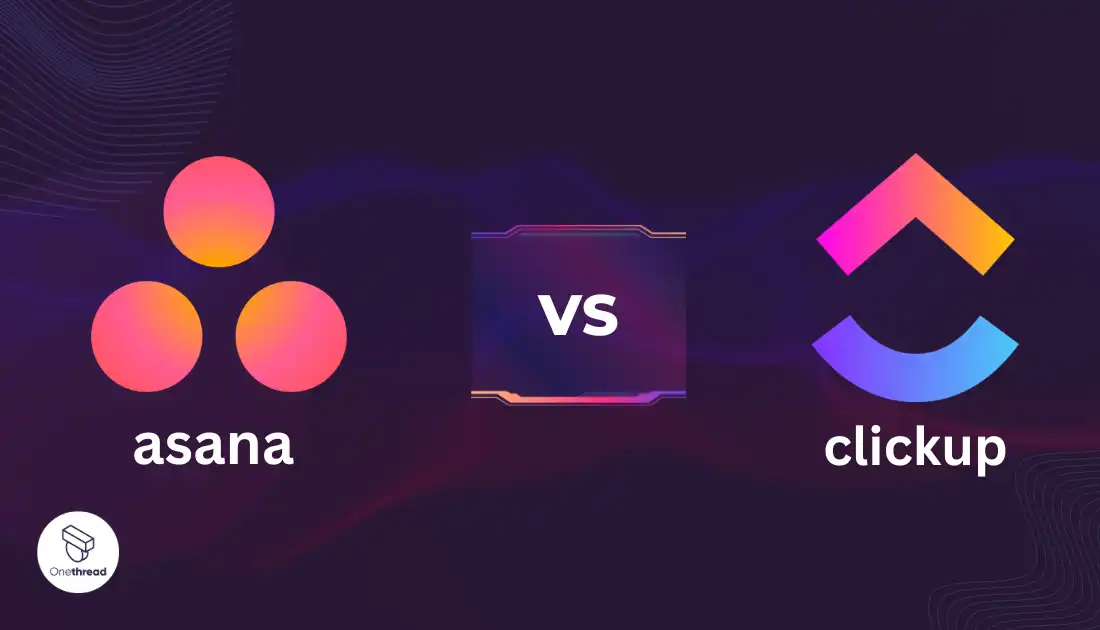Asana and ClickUp are two widely-used project management tools that can help teams manage their tasks, projects, and workflows. With Asana, you can easily create tasks, assign them to team members, and set deadlines. At the same time, ClickUp offers a wide range of project management features, including time tracking, team collaboration, and more.
People often compare Asana and ClickUp because they have similar functionality and are designed to help teams manage their projects and workflows more efficiently. But they also have their differences, such as pricing, user interface, and specific features.
In this blog post, we’ll dive into comparing Asana and ClickUp. We aim to help you decide which tool best suits your needs. We’ll cover various topics, including pricing, features, ease of use, integrations, customer support, and more. By the end of the post, you’ll have a better understanding of the advantages and disadvantages of each tool and be able to make an informed decision on which one to choose for your team.
What is Asana?
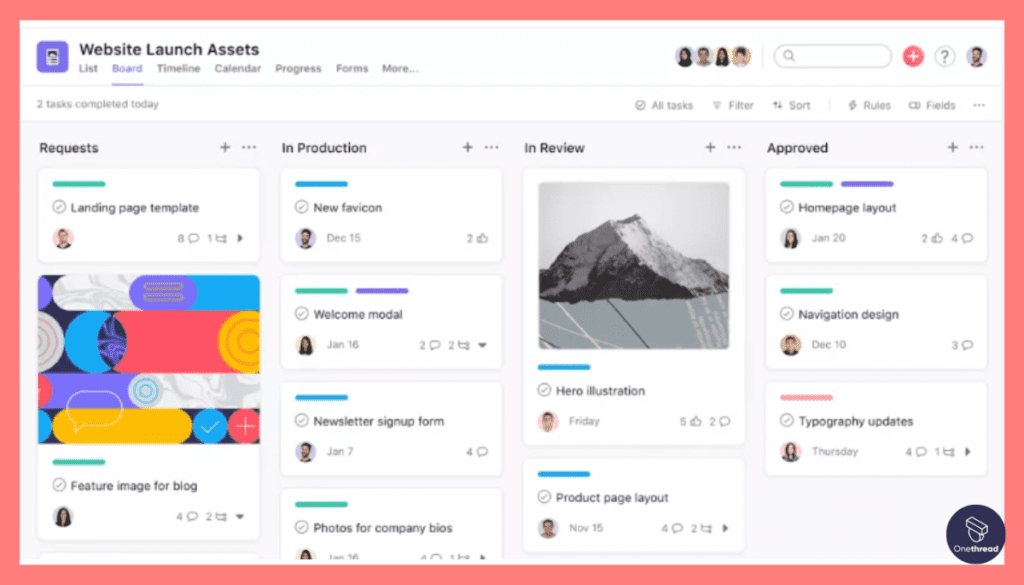
Asana is a fantastic project management tool that allows teams to work together seamlessly on tasks, projects, and workflows. One of the best things about Asana is that it’s easy to learn and use, making it accessible to anyone on your team. You can create tasks, set deadlines, and track progress, all within one platform. Plus, Asana offers a ton of integration options, so you can easily connect it with other tools you use regularly, like Slack or Google Drive.
Let’s take a look at three unique features of Asana:
Customizable dashboards:
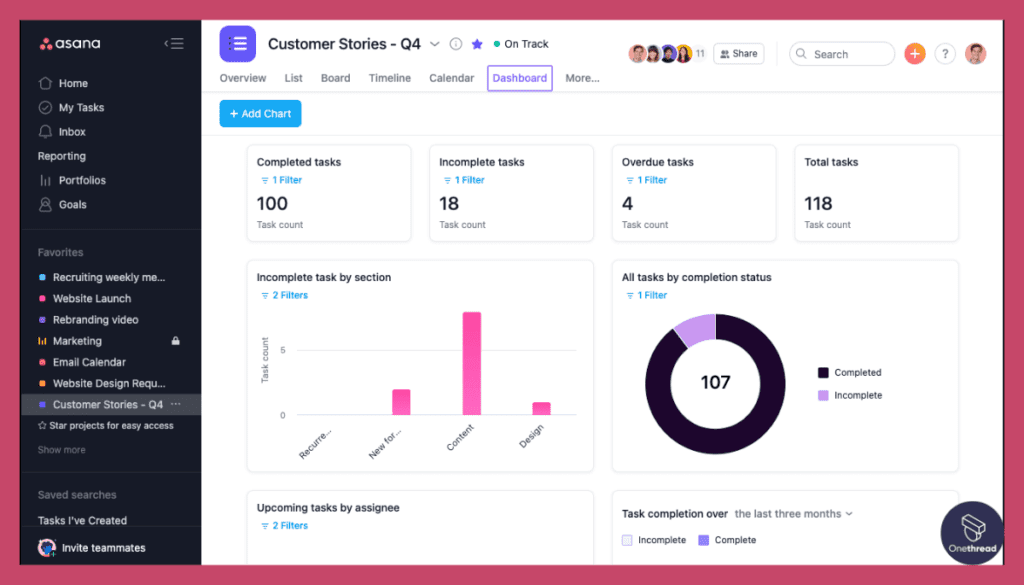
With Asana’s customizable dashboards you can organize tasks, projects, and priorities however you like, making it easier to manage your workload.
Collaboration tools:
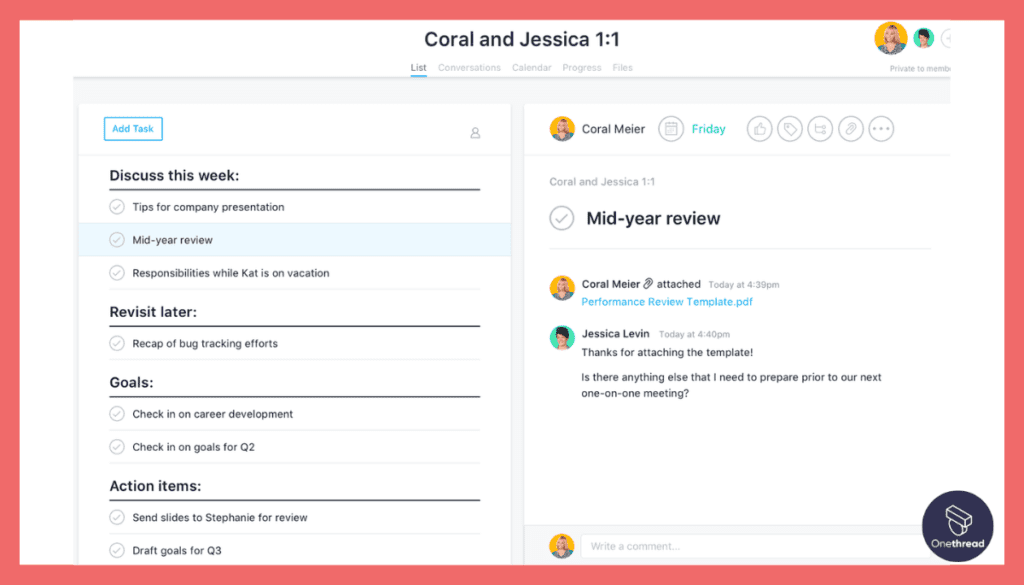
Asana lets you assign tasks, leave comments, and notify users of any changes, keeping everyone up-to-date with project progress.
Advanced reporting:
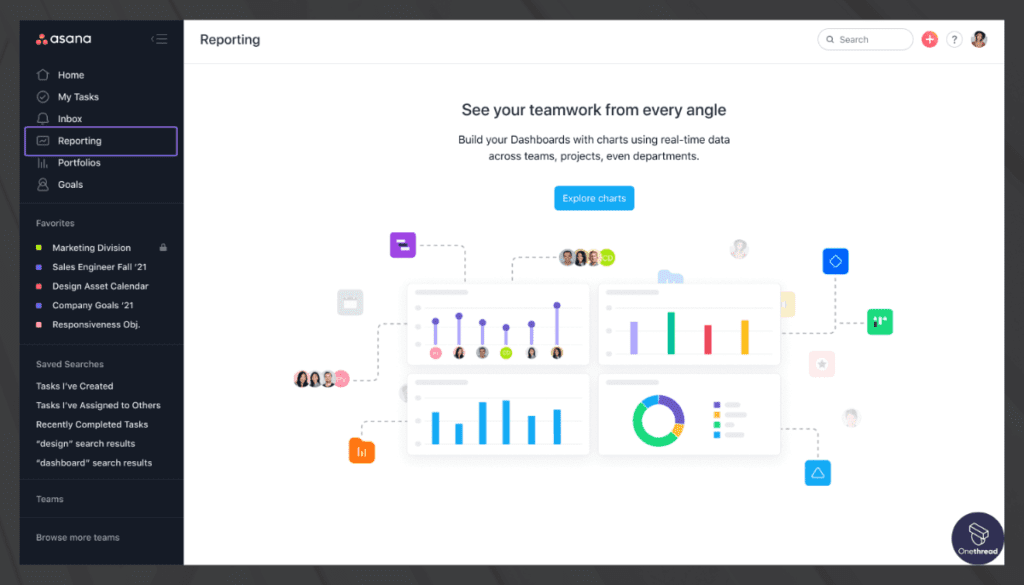
Asana’s detailed reporting tools help you visualize which tasks are taking the most time, monitor team productivity, and find ways to improve your workflows.
Overall, Asana is an incredibly versatile project management tool that can help teams of all sizes and industries. Whether you’re working on a small project or a large-scale initiative, Asana can help you stay organized, focused, and on track to achieve your goals. So, if you’re looking for a powerful yet user-friendly tool to manage your team’s work, Asana is definitely worth considering!
What is ClickUp?
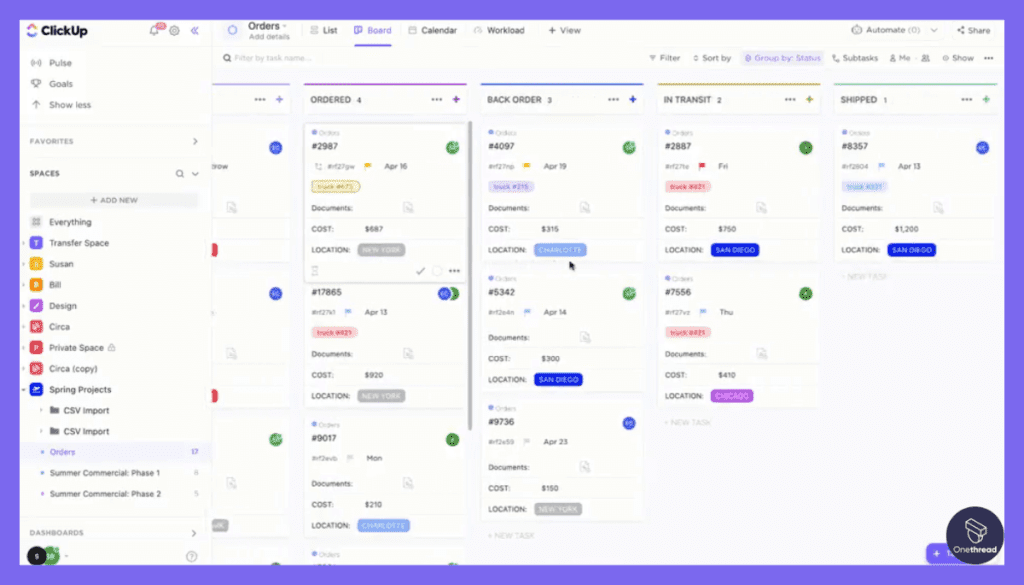
ClickUp is a highly customizable project management tool with diverse features enabling efficient teamwork. It offers adaptable functionality, allowing it to be used for various tasks, including project management, sales pipelines, time tracking, etc.
Here are three unique features of ClickUp:
Customizable views:

ClickUp offers users a range of views, including a list, board, calendar, and more. You can choose the view that best suits your needs, making managing your tasks and projects more accessible.
Time tracking:
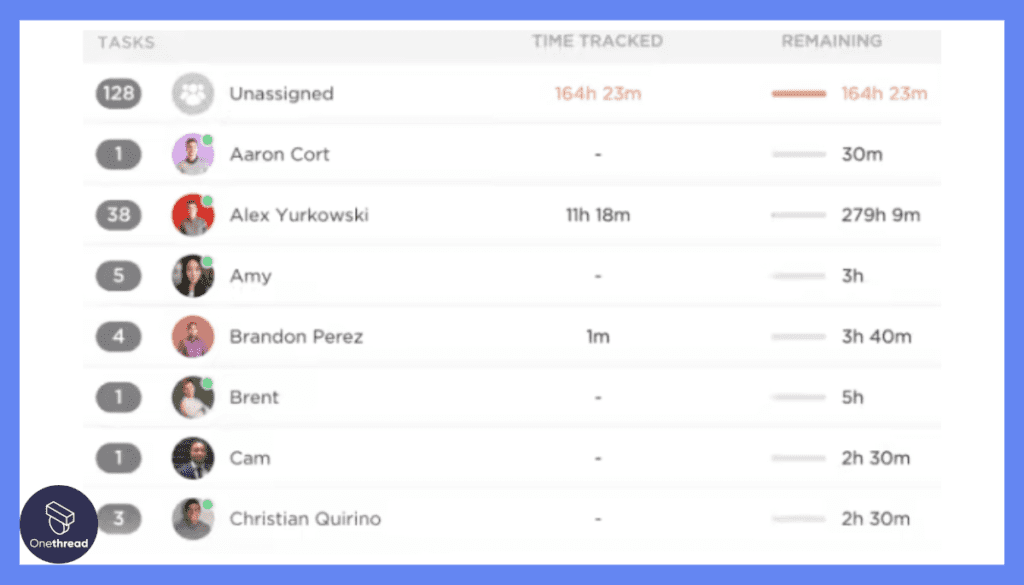
ClickUp has a built-in time tracking feature to track time spent on tasks, projects, or clients. This feature makes it easier to manage your workload and bill clients accurately.
Automation:
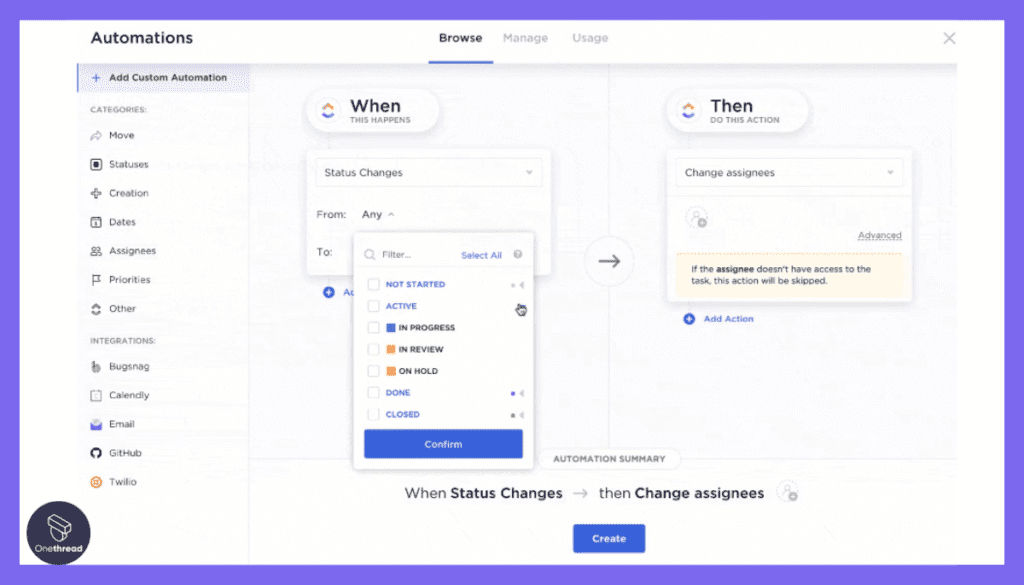
You can set up automation to save time on repetitive tasks, such as assigning tasks to team members, sending notifications, and more.
Overall, ClickUp is a highly customizable project management tool that can help teams of all sizes and industries. Its versatility, range of features, and customization options make it popular for those looking to improve their workflow and collaboration. Whether managing a large team or working solo, ClickUp can help you stay organized, focused, and on track to meet your goals.
Asana vs ClickUp: Feature Comparison
1. Customization
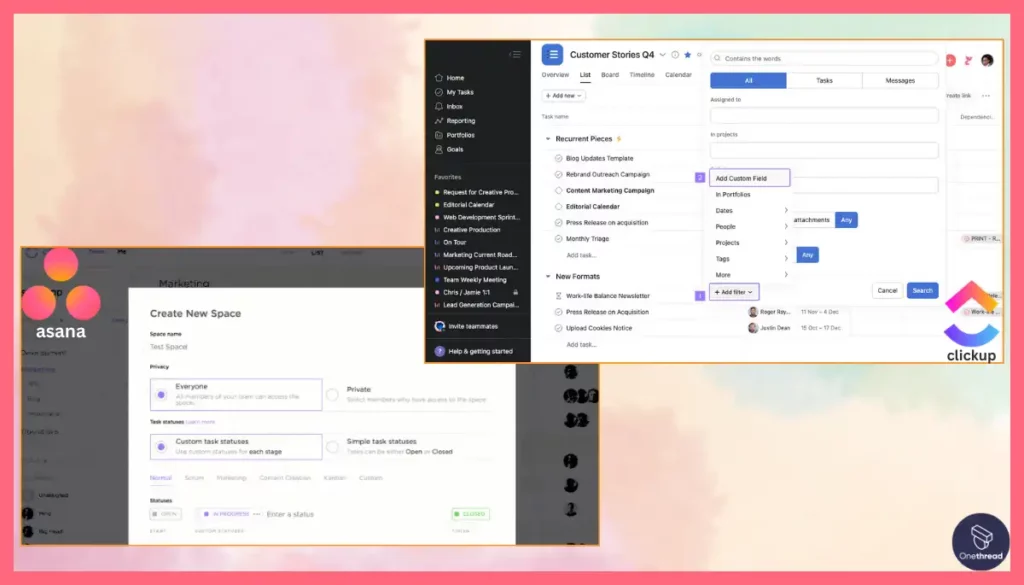
Both Asana and ClickUp offer a range of customization options to help users tailor their platform to their specific needs. ClickUp offers more customization options, allowing users to create custom fields, statuses, and workflows, while Asana has more limited options.
2. Learning Curve
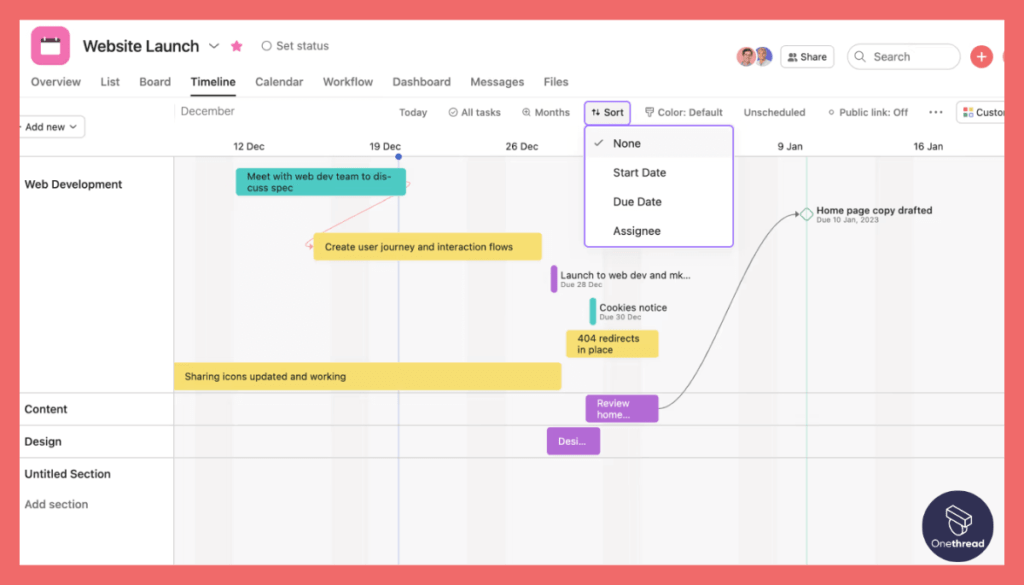
Asana is known for its easy-to-use interface, making it a popular choice for beginners. ClickUp, on the other hand, has a steeper learning curve due to its vast range of features and customization options.
3. Set up and User Experience:
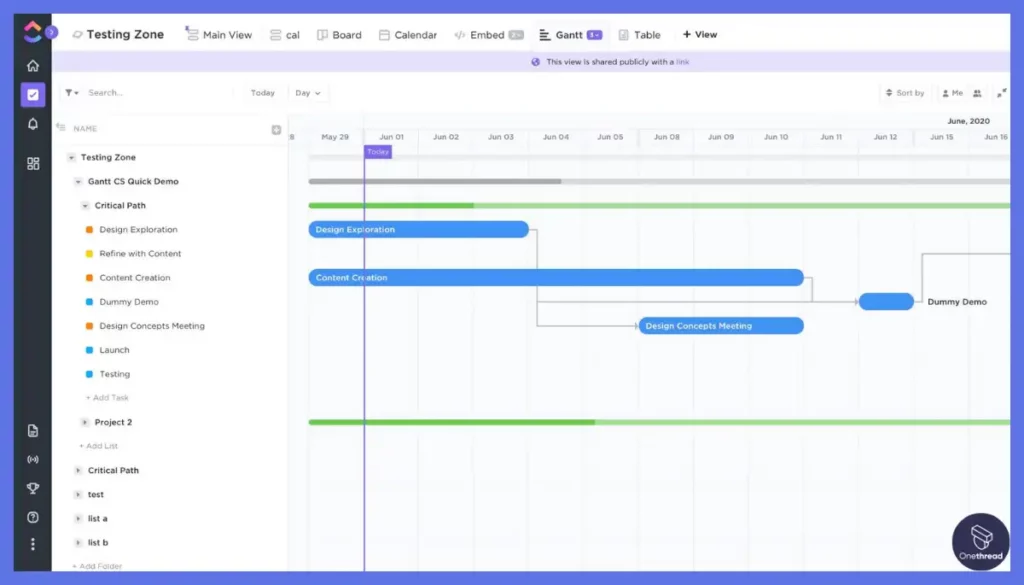
Asana has a more straightforward setup and user experience, making it easier for teams to get started quickly. ClickUp has a more complex setup and user experience, but its customization options make it more potent in the long run.
4. Free plan vs. paid plan:
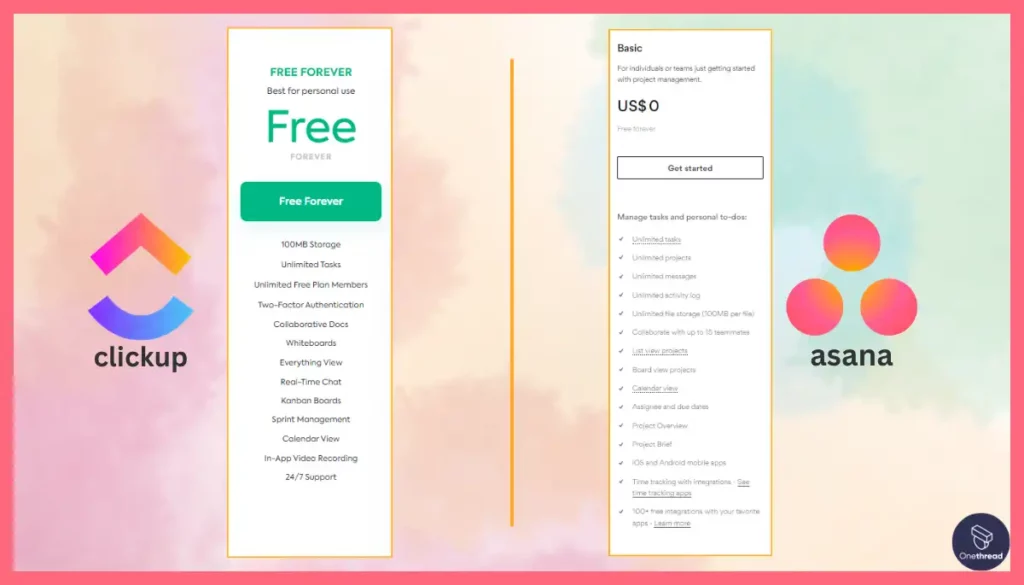
Both Asana and ClickUp offer a free plan, but ClickUp’s free plan has more features than Asana’s. ClickUp’s paid plans also offer more features (like Time tracking, Custom Fields, Multiple assignees, Goals, Embeddable views, etc..) at a lower cost than Asana’s paid plans.
5. Integrations:
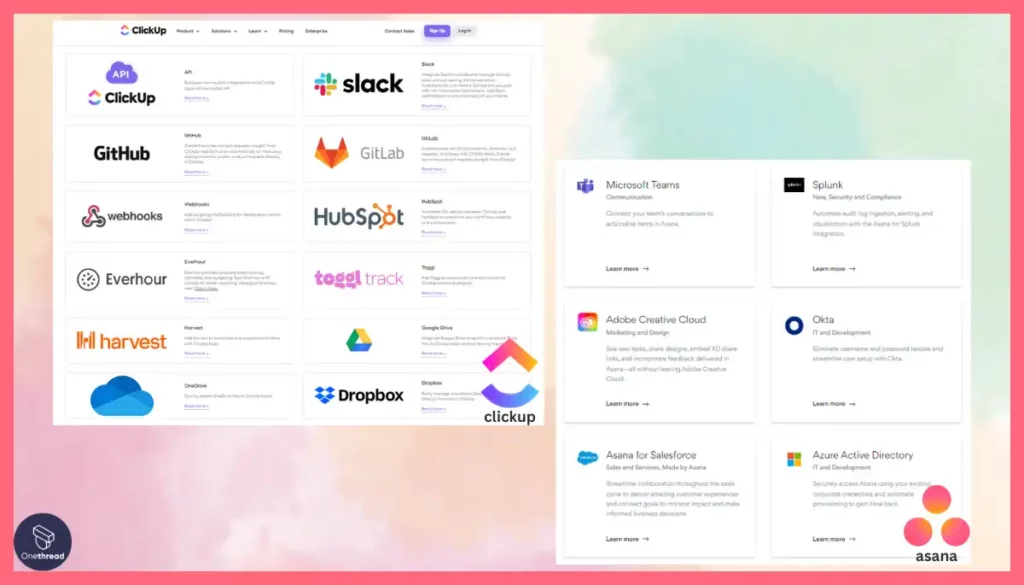
Asana and ClickUp offer various integrations with popular tools like Slack, Google Drive, and Trello. However, ClickUp has more extensive integration options, making connecting with other tools you regularly use easier. Asana groups its integrations into function-based categories, making it easier for users to find and connect with other tools based on their needs. ClickUp, on the other hand, offers a broader range of integration options, making it easier to connect with other tools you use regularly.
6. Flexibility and Customization:
ClickUp offers more customization options and flexibility than Asana, allowing users to create custom fields, statuses, and workflows. This flexibility gives users more control over organizing and managing their tasks and projects.
7. Customer Support:
Asana and ClickUp offer customer support through email, chat, and phone. However, ClickUp offers extensive customer support options, including a knowledge base, webinars, and video tutorials.
8. Pricing
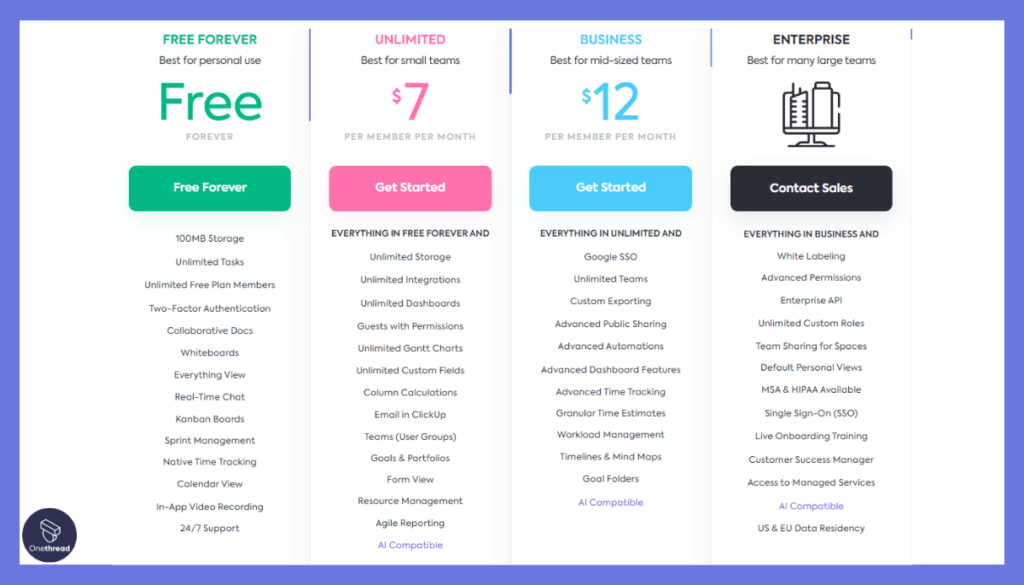
ClickUp’s pricing is more affordable than Asana’s, offering more features at a lower cost.
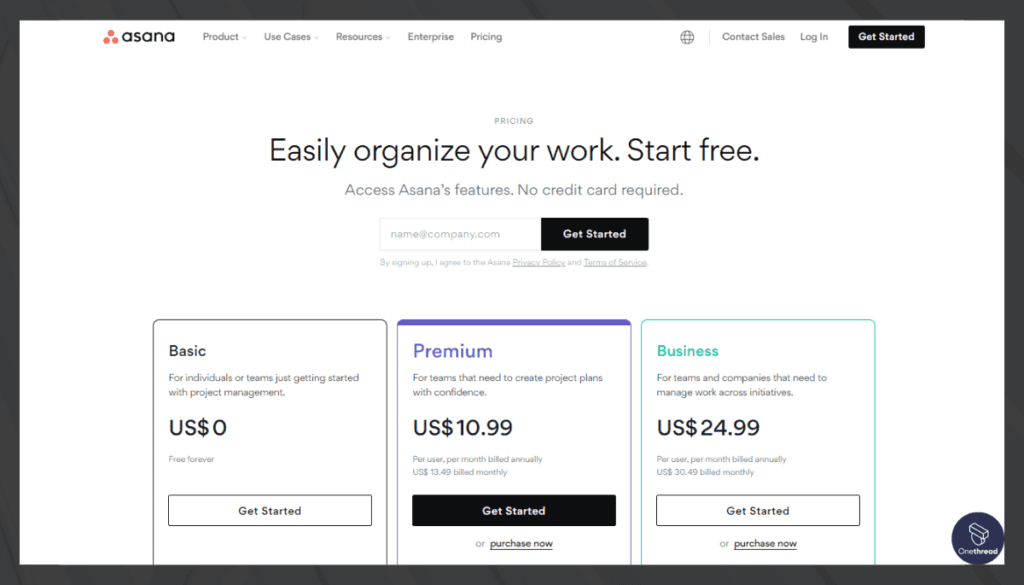
Asana’s pricing plans are more expensive, but they offer more features and better customer support options.
Other Alternatives

Are you on the lookout for a project management tool that combines the best of Asana and ClickUp? You might want to check out Onethread! This platform offers a variety of features that you typically get with both Asana and ClickUp. This makes it an incredibly versatile tool for managing all your team’s tasks and projects.
What’s unique about Onethread is that it approaches project management in a slightly different way. It’s designed to help teams stay focused and productive by using a visual, threaded layout to manage tasks. You get all the customization options and the ease of use that you expect from Asana, along with the added flexibility and customization options of ClickUp.
One of the coolest things about Onethread is that it integrates with a range of popular tools like Google Drive, Slack, and Trello. This means that you can manage all your projects and tasks in one place, without having to switch between different apps.
If you’re searching for a project management tool that’s both powerful and easy to use, then Onethread is definitely worth considering. With its intuitive interface, customization options, and innovative approach to task management, Onethread can help you stay on top of everything that matters to your team.
Here’s a comparison of the features for OneThread vs Asana vs ClickUp
Features | OneThread | Asana | ClickUp |
Customization | High level of customization | High level of customization | Extensive customization options |
Learning Curve | Easy to learn | Easy to learn | Can be steep for beginners |
Set up and User Experience | Straightforward set up, user-friendly interface | Straightforward set up, user-friendly interface | Can be overwhelming for new users |
Free plan vs paid plan | Offers a free plan with limited features | Offers a free plan with limited features | Offers a free plan with more features |
Integrations | Integrates with popular tools like Google Drive, Slack, and Trello | Integrates with popular tools like Google Drive, Slack, and Trello | Integrates with a wide range of tools, including Zapier and GitHub |
Flexibility and Customization | Uses a visual, threaded layout for managing tasks | Offers a range of customization options | Offers a range of customization options |
Customer Support | Provides support via email and chat | Provides support via email and chat | Provides support via email, chat, and phone |
Asana vs. ClickUp vs. Alternatives: Which One Should You Use?
There is no clear winner when choosing between Asana, ClickUp, and their alternatives. These tools have unique strengths and weaknesses, making them suitable for different use cases.
Let’s acknowledge that both Asana and ClickUp are excellent project management tools with unique features and advantages. However, which one you choose depends on your specific needs and preferences.
If you’re looking for a device that’s easy to use and has plenty of integrations, Asana is a great choice.
On the other hand, if you want a highly customizable and flexible tool that can handle all sorts of projects, ClickUp might be the way to go.
But what if you want the best of both worlds? That’s where OneThread comes in. It offers Asana’s ease of use and integration options and the customization and flexibility of ClickUp.
Ultimately, the best project management tool for your team will depend on your specific needs, preferences, and budget. Consider the features, use cases, and pricing before making a decision.
Conclusion
Let’s quickly recap what we’ve learned about Asana, ClickUp, and Onethread.
We compared their features and looked at their strengths and weaknesses. It’s important to note that each tool has unique features that cater to different project management needs.
In terms of simplicity, Asana is an excellent choice for teams that need an easy-to-use tool.
On the other hand, ClickUp is more suitable for complex projects and teams that require extensive customization options.
If you’re having trouble deciding between the two, try Onethread. It’s a tool that combines the best features of both Asana and ClickUp, making it an excellent choice for teams that want to manage their projects and tasks easily.
The decision of which tool to use comes down to your specific needs. Consider the size of your team, the nature of your projects, and your workflow before deciding. All three tools have unique strengths, and each can be an excellent choice for the right team.
